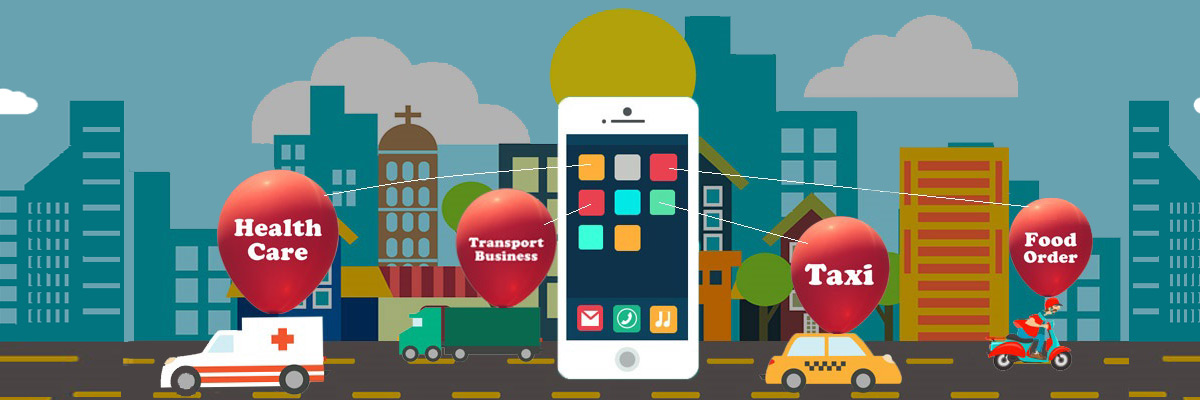Developing a mobile app is one of the most crucial steps for startups aiming to succeed. The costs involved in developing an app can be daunting, but with the proper knowledge, you can make informed decisions that optimize your budget while ensuring the highest quality.
For startups, the question of "How much will mobile app development cost?" is not as straightforward as it might seem. The cost to develop an app vary widely based on the complexity, the platform (iOS, Android, or both), the type of app (on-demand, marketplace, social networking, etc.), and the geographical location of your app development team.
With mobile apps now a key component of business success, understanding the cost estimate behind building an application is critical.
This comprehensive guide will examine the factors influencing app development costs, discuss strategies for controlling those expenses, and explore the opportunities that different types of apps present.
How Much Will It Cost to Make an App?
To estimate the cost of building an app, a straightforward approach is to multiply the number of hours required by the hourly rate of your dedicate development team to find the cost of building an application.
No. of hours x Hourly Rate = Cost of App Development
Cost of Mobile App Development Project: General Estimates & Ballpark Figure
| App Type | General Features | Time Required | Approx. Cost |
|---|---|---|---|
| Basic Mobile App | Design, Sign up, Login, Social Login, Profile, API integration to fetch data like booking etc (Android + iPhone). | 250-300 | $4,000 - $5,000 |
| Standard Mobile App | Basic + Booking, Location Features, Payment Integration, In-app purchase (Android + iPhone). | 480-600 | $7,200 - $9,000 |
| Custom Mobile App | As per requirements like Marketplace, Uber, Social Media, etc. | 1000-1600 | $15,000 - $24,000 |
Multiple factors, such as features, design, platforms, and backend infrastructure, influence the average cost of app development. Here's a more nuanced breakdown beyond just the dollar amounts.
1. Scope of Features and Functionalities
The more features your app has, the more time and effort needed for development drives the cost. For example, a simple app with basic functionality (like a calculator or a to-do list) may only require 200-500 hours of work, while a feature-rich app (such as Uber or Instagram) could take upwards of 3,000 hours or more.

Examples of app features that increase complexity (and costs):
- User Authentication: Simple login vs. social media integrations, two-factor authentication.
- Geolocation: Real-time tracking (e.g., Uber) is more complex than basic location detection.
- Payment Processing: Secure and compliant integration with payment gateways (e.g., Stripe, PayPal).
- Real-time Data Syncing: Apps that update data across platforms in real-time (such as messaging apps) require a complex backend.
- Offline Capabilities: Allowing users to interact with the app without an internet connection.
2. Platform Selection
Startups must decide whether to for a single platform (iOS or Android) or a cross-platform app.
Developing for a single platform is typically more cost-effective. However, cross-platform tools like React Native and Flutter allow startups to build both Android app and iOS app simultaneously, reducing development time by reusing code across platforms.
Cross-platform development is a strategic choice for startups with limited budgets but a broader audience base.
Also, Releasing your app on both the App Store and Google Play Store involves adhering to the respective platform’s guidelines and requirements, which can affect the development process, submission time, and approval, ultimately influencing your app’s availability to a broader audience.
3. Type of App
Different types of apps require varying levels of investment. For instance, a basic e-commerce app may need a simple interface for listing products and handling transactions.
On the other hand, apps that rely heavily on data processing, such as machine learning apps or apps requiring high levels of user interaction (e.g., games or social networking apps), will be far more expensive to develop due to the technical demands.
What Affects Your App Development Cost?
The app development process typically includes several development stages, such as ideation, design, coding, testing, and deployment, all of which influence app cost and timeline of building it.
Understanding these will help you manage your budget efficiently.
1. App Complexity
The complexity of the app, determined by the number of features and the backend infrastructure, plays a crucial role in mobile app development costs. For example, an e-commerce app might require a product catalogue, user authentication, a shopping cart, a payment gateway, and real-time inventory management. Each of these functionalities requires careful planning, testing, and implementation and adds to the total cost.
- Simple apps typically consist of a few screens and minimal user interaction. These apps may not need server-side infrastructure and usually take less time to build. An example could be a fitness tracker that logs activities but doesn’t sync with external services.
- Moderately complex apps require more screens, integrations with third-party APIs (e.g., payment systems), and app features like push notifications or user authentication. A travel booking app, for instance, requires integration with airlines and hotel APIs to pull live pricing data.
- Highly complex apps often involve advanced real-time features like video streaming, AI, or augmented reality. Examples include Uber’s ride-hailing platform, which combines GPS, payment gateways, and real-time communication between drivers and riders.
2. Design and User Experience
The quality of the design can significantly impact the overall cost. A well-designed app doesn’t just look good; it provides a seamless user experience. This involves understanding user needs, designing intuitive interfaces, and making the app accessible to a broad audience.
- Basic Design: Using standard templates and fewer custom elements can help keep design costs low.
- Custom Design: If your app requires a unique, branded user interface with custom animations and graphics, you must hire UI/UX experts, who may take several weeks or months to perfect the design.
3. Development Team
The team you hire to build your app significantly impacts cost. Whether you work with an in-house team or freelancers or outsource to an agency, the location and expertise of your mobile app developers will affect both price and quality.
- Freelancers: A more budget-friendly option but requires strong project management on your part.
- In-house team: Provides more control but comes with higher costs, including salaries, benefits, and equipment.
- Outsourcing: Allows startups to tap into global talent at competitive rates. Eastern Europe, India, and Southeast Asia offer excellent development expertise at lower costs than the US or Western Europe.
Best Way to Control the Cost of Developing an App When You're Starting Up
Managing costs effectively is vital, especially for a startup. Here are some strategies to help control app development expenses while achieving your goals.
- Develop an MVP (Minimum Viable Product): An MVP is the most basic version of your app that still delivers value to your users. By starting with an MVP, you can test your concept in the market, gather feedback, and make necessary adjustments before investing more time and money in additional features. This lean approach reduces the risk of wasting resources on features that users don’t want or need.
- Set Clear Priorities: Not every feature needs to be built at once. Startups should focus on delivering the core features that solve their users’ problems. Additional features can be introduced incrementally as you learn more about user preferences and behaviors.
- Use Agile Methodology: Agile development is an iterative approach that allows app developers to release small, functional app increments over time. This ensures flexibility and helps teams pivot quickly when new requirements or challenges arise, reducing the cost of unexpected changes.
- Outsource Development: Outsourcing to regions with lower labor costs can dramatically reduce the cost of outsource app development without sacrificing quality. Make sure you choose reputable vendors with a proven track record. Countries like India, Eastern Europe, and Latin America have thriving IT industries offering competitive rates for skilled developers.
SEE ALSO: How to Create an App from Scratch
Outsourcing App Development: How to Build a Remote Team?
Outsourcing is increasingly popular among startups because it offers access to a global talent pool at competitive rates. However, you must follow best practices to make outsourcing work for your app development.
1. Choosing the Right Outsourcing Model
- Freelancers: Ideal for smaller, simpler projects where one or two developers can handle the workload.
- Dedicated Teams: For more complex apps, you may need an entire team, including developers, designers, project managers, and QA testers. Hiring a dedicated team from an outsourcing agency provides the benefit of having a cohesive group of professionals working on your project.
2. Finding the Right Talent
Platforms like Upwork, Freelancer, and Toptal allow you to evaluate developers based on experience, past projects, and client reviews. For agencies, websites like Clutch and GoodFirms provide in-depth insights and customer testimonials.
3. Effective Collaboration Tools
Remote teams can face communication challenges, but tools like Slack for real-time messaging, Trello or Jira for project management, and Zoom or Google Meet for video calls make collaborating easier. Clear communication and regular updates are essential to keep your project on track.
Building an MVP to Validate Your Idea
As previously mentioned, developing an MVP can save startups time and money. But the benefits go beyond cost reduction.
- Gather Early Feedback: Launching an MVP allows you to gather feedback from real users and adapt the product based on their needs. Early feedback can reveal unexpected insights into user behavior, which can guide future development.
- Reduce Risk: Focusing on core features limits the scope of your initial development and avoids over-investing in features that may not resonate with users. Once the MVP is successful, you can invest further in scaling and adding more features.
Profitable App Development: Approaches to Cover the Cost
Developing an app is only part of the equation. You need to ensure that the app will generate enough revenue to cover development costs and drive profitability.
- Freemium Model: The freemium model allows users to download and use your app for free while paying for additional features or services through in-app purchases. This model works well for apps that offer valuable content or services, such as fitness apps or educational platforms.
- Subscription-Based Model: A subscription-based model involves charging users on a recurring basis, typically monthly or yearly, for continued access to the app’s content or features. This model is standard for apps offering continuous value, such as music streaming services (Spotify) or productivity tools (Slack).
- In-App Advertising: If your app garners a large user base, in-app advertising can be a significant source of revenue. Partnering with advertising networks like Google AdMob allows you to earn income based on the number of ads displayed or clicked.
- Pay-Per-Download: Charging users to download your app upfront can be profitable if you provide significant value. This model is more common for niche or highly specialized apps.
On-demand & Marketplace App Ideas [With Cost to Build an App]
If you're deep into love for building your app and launching your startup, here are some great ideas to get started.
The list consists of several ideas that we believe have the potential to become the next big unicorns, even when there's competition out there.
We've built and launched each of these so you can be sure we are talking sense here.

1. Car Wash App Development Costs
More than 2 billion cars are washed annually in North America alone. Clearly, there's a massive growth opportunity in this segment.
If you're thinking of building a car wash app, it would cost you approximately $4800-$10,000, subject to the features, business model, and other factors.
You can explore more about car wash app development and see how it can give you an edge in the blog.

2. Dating App Development Costs
You know- online dating is now one of the most common ways to meet new people and find love among the youth. So, why not develop an app and succeed like Tinder?
The industry is already booming and expected to cross $1.49 billion in revenues by 2028.
You can build a dating app within a budget of $5000-$10,000. But you need to be careful about the features, revenue model, and other factors that we've covered in a dedicated blog for the cost of dating app development.

3. Salon Marketplace App Development Cost
If the beauty and salon industry is your calling, then you can think of developing an app like Uber for haircuts and other salon services.
Hygiene is a big concern post-COVID and if you position yourself right, you can gain traction locally or regionally with a marketplace app for salon business.
A standard salon marketplace app would cost anywhere between $3,000 to $15,000 with a remote development team. Get all the details to build an application for salons and what will it cost you in the following blog.

4. Delivery App Development Cost
Do you know the best thing about on-demand? Everything is at your disposal and just a click away. In 2020, if you need a delivery, you just open an app, place a request, and get it at your doorstep.
If you are thinking of building your delivery app, it will cost you at least $3,000-$10,000 for an app with basic features and functionalities.
This idea is a goldmine already with startups like Dunzo getting great traction. If you are also keen on this idea, here is an exhaustive guide on how to build an app like Dunzo.

5. Grocery App Development Cost
Everyone needs groceries and after the pandemic, the on-demand home delivery segment has picked up the pace. Startups like Instacart have gained momentum in recent months.
You can also think of launching a grocery marketplace app for your city or region. You would be able to build a decent grocery delivery app within a range of $3,000-$10,000 depending on the features. Here is everything we know about grocery app development:

6. TaskRabbit-like App Development Cost
People are busy more than ever and they need a handyman to hire for menial tasks. It can be to pick up groceries, get office supplies, or book a ticket offline for a concert.
TaskRabbit has successfully catered to this demand and is growing rapidly too. You can also build a TaskRabbit like app within a range of $5,000-$30,000 and if you want to know more about how to build one, here is a valuable resource:

7. Handyman Service App Development Cost
A handyman app helps users find workers for tasks like plumbing, electrical faults, or other service requests. Think of it like Uber but for various handyman jobs.
Just like TaskRabbit, a handyman service app would save hundreds of hours each year for users and offer convenience. That's why the concept is getting popular.
You can think of building an app for handyman services within a budget of $5,000 - $25,000 and if you want to know more, you can always look for information about the segment in our dedicated blog for handyman service app development.

8. Diet and Nutrition App Development Cost
People are serious about their fitness and lifestyle. And that's where you have another opportunity.
You can think of multiple business models that are based on a diet and nutrition app- personalized training, fitness plans, meal plans, meal tracking, and other business opportunities.
The cost of developing an app for the fitness segment would be $5,000 - $15,000 approximately. If you want to know more, you can check out our blog on diet and nutrition app development.

9. On-demand Fuel Delivery App Development Cost
On-demand fuel delivery. No, we are not kidding when we talk about this idea. In fact, it is a booming segment with startups working globally to grab their slice of the pie.
We wrote an extensive piece on this segment and how one can build an app for on-demand fuel delivery. If you want to choose an offbeat path with a ready market, this can be your chance.

10. Uber-like Taxi App Development Cost
We don't need to convince you why Uber is an amazing business idea. You already know it. If you're thinking about walking on the same path, you can easily build an Uber-like taxi app with a budget of approximately $16,000.
We've covered Uber-like taxi application development in detail with specifics in our blog on Taxi app development.

11. Currency Converter App Development Cost
Now, this is a simple idea. Giving currency conversions in real-time. If packaged right, for example, build a niche product for tourists, or bundle it together in a financial offering this can lead to great user experience and growth.
Here is something we wrote about currency converter app development, its scope, cost, and specifics. You would be able to create an app for yourself within a range of $3,000-$10,000.
Conclusion
App development prices vary widely based on several factors, but by carefully planning your budget and making intelligent decisions, startups can build high-quality apps that don’t break the bank.


